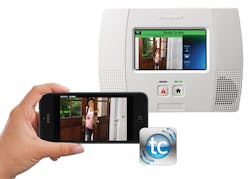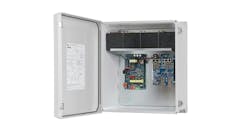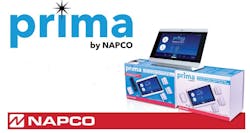Home automation and building control have long been lucrative sidelines for the locksmith willing to take the challenge. Since every home automation application is unique, the effort must be made to engineer a solution that will meet the requirements and operate correctly. Home automation and building control has broadened its scope to include remote site monitoring and controls. Remote site monitoring ties into the recurring monthly revenue (RMR) business plan upon which the alarm industry has been built.
Remote site management which also includes monitoring and archiving video surveillance cameras and managing electronic access control systems has been identified as one of the hottest growth market segments in the security industry. Being able to integrate security, remote site management and video surveillance/archiving together into a unified component, and provided as a single service surely defines the future of the alarm industry.
Read on and it and decide it could possibly define your own future prosperity.
The most requested home automation features have traditionally been thermostats and flood sensors to enable owners to identify issues at their primary homes, vacation homes, or businesses before no heat or leaks can cause costly damage. Central vacuums and intercoms are often top wish-list items for home upgrade projects.
Another niche home automaton market has been home theatres with large screen TVs, projectors, etc. and where drapes are drawn and lighting dimmed with the press of a button.
Because appliances such as TVs are highly competitive commodities) with razor thin margin with lots of customer service issues, home automation served mostly the luxury market and was undertaken by dealers willing to take the plunge.
Another issue with implementing extra feature was that the legacy technologies for connecting them were primarily line carrier and hard wiring, both of which presented drawbacks and presented high costs to implement. Therefore the home automation market’s growth did not meet many forecasters’ initial expectations.
Newer technologies such as Bluetooth, ZigBee and Wi-Fi are inexpensive and work well. A wide variety of inexpensive, clever accessories are reaching the market. Finally the acceptance of mobile devices and apps as the ultimate remote control are game-changers that all together promise to leverage interest and activity in this market.
My entry point into the security industry was as technician, and later as director of technical services for a manufacturer of electronic access controls. I learned that locking devices were an essential ingredient in an access control system, and I decided that the major difference between a security system and an access control system was that the former kept the bad guys out, while the latter let the good guys in. Also the security system generally addressed an entire business or building, while an access control system was built up from a single door to as many as were required. My perspective was as a supplier of systems that controlled access and kept facilities secure.
When I started writing for security trade magazines, one of my earliest features was a case history based on an installation I did for a custom-built cottage hideaway on Long Island’s north shore.
It was determined that besides a stem to stern perimeter and interior security and panic alarm system, we’d need to put locks on the vehicle gate, Intercoms and entry controls on the several exterior doors and integrate them with the alarm, and please, no cameras.
This was in the early 90s and I used an ADEMCO Vista because it offered all the wireless security and auxiliary control options I needed, allowing me to supply a state-of-the-art home automated/building control system.
Fast forward to 2006, when the opportunity to go over the top once again presented itself, and again the project would be the basis for a case history. The contractor was renovating a carriage house in the Virginia Blue Ridge for a gentleman who was deaf. This project involved setting up the residence so the owner would be alerted of visitors, intruders, and severe weather alerts wherever he was on the two-acre property, whether he was awake or asleep.
The security had to be discrete, but the annunciation and reporting had to grab his attention although he was unable to hear and simultaneously signal police fire and EMS, whether there was a dial tone or not.
Again my panel of choice was a Vista, and before it was over we had over 80 zones, interfaces and auxiliary outputs for among other things; shakers, strobes, and pagers.
So home integration is nothing new to Honeywell, and there latest round of product releases continue the tradition of giving the security professional the tools required to design what the client needs.
Self-contained alarm systems have become popular because they are inexpensive to own and install with little or no wiring. Traditional control panel/ keypad systems like the Vista still hold significant market share in new system sales, and of course there are many older installed systems still being used.
With the release of the LYNX touch 5200 and 7000 standalones the company plans to enable security professionals to enter the fast-growing home automation and business control sectors.
For traditional control panel/keypad systems, Honeywell now offers the VAM module suited for both home automation/business control upgrades to existing VISTA system (there are plenty out there) as well as new installations.
There is a lot of marketing spin regarding the strengths of standalones VS panel/keypad configurations. And professional security dealers understand how much truth is mixed into the rhetoric. Our opinion is there is a place for both types in the marketplace, and it is the dealers’ role to advise their clients and produce the most appropriate solution for each application. It is definitely not a one-size-fits-all situation.
The 5200 all-in-one system provides an enhanced user experience while reducing costs. End-users can now view live, IP video on-demand directly on the panel’s 4.7-inch vivid color touchscreen. The LYNX Touch 5200 offers two-way voice over GSM as well as two-way voice over Wi-Fi®; unique features that dramatically streamline the installation process, save money and time and provides greater options for connectivity.
LYNX Touch 5200 supports single-camera viewing when used with Honeywell Total Connect™ Video products:
- iPCAM-PT
- iPCAM-WO
- iPCAM-WI2/B
- ACU
With the exclusive Honeywell LYNX Connect app, users can also view live video feeds and control their systems from an iOS or Android device anywhere on premises, even without a Honeywell Total Connect account.
The sunrise/sunset feature can be easily programmed to trigger scenes such as lights turning on and off on a seasonal basis.
For an added level of security, Z Wave® lights can be randomized for an occupied appearance when a home or small business is empty.
The Night Stay Arming Mode arms preselected interior sensors – such as in a basement or on the main floor – while letting end users move about freely in areas like hallways or upper floors.
Support for Z-Wave® flood sensors has also been added, potentially reducing costly structural damages by shutting down a building’s main water line when water is detected.
Remote-upgradeable software eliminates the need for installers to schedule on-site visits, and more intuitive default settings reduce set-up and customization time.
LYNX Touch 5200 can accommodate up to 32 individual security codes—including an installer code and master code
The Honeywell LYNX Touch 7000, is a self-contained security and control system for homes and small businesses which features a bright, seven-inch full-color touchscreen display with graphic icons and intuitive prompts and live video of up to four cameras.
LYNX Touch 7000 also offers Z-Wave® automation capabilities, advanced alarm communications, garage door notification and control, tornado alerts and more. Along with two-way voice over GSM, LYNX Touch 7000 offers low-cost two-way voice over Wi-Fi® to streamline the installation process, provide greater options for connectivity and increase the potential for RMR.
LYNX Touch 7000 supports quad-camera viewing when used with Honeywell Total Connect Video products:
- iPCAM-PT,
- iPCAM-WO,
- iPCAM-WI2/B
- ACU
The Honeywell LYNX Connect app lets users locally view video and control their systems from any iOS or Android device.
Like the LYNX Touch 5000, the LYNX Touch 7000 is ideal for both residential and small commercial applications.
The sunrise/sunset feature can be programmed to trigger scenes such as lights turning on or off on a seasonal basis, and Z-Wave® lights can be randomly turned on and off to create an occupied appearance when homes and businesses are empty. The Night Stay Arming Mode arms preselected interior sensors—such as in a basement or on the main floor—while letting users move about freely in areas like hallways or upper floors.
The LYNX Touch 7000 system supports up to six door locks, four thermostats and additional Z-Wave sensors. In addition, LYNX Touch 7000 supports 80 wireless zones, a 256 local event log and up to 48 users.
The VISTA Automation Module (VAM allows security dealers to offer affordable home automation to customers who own VISTA security systems. The VAM can control up to 232 Z-Wave devices – including thermostats, locks and light fixtures – to help installers more-easily create connected homes with security technology at the core.
The device supports up to 32 IP cameras, and a built-in web server allows homeowners to control the VAM and view live video using any web-supported device such as a smartphone or tablet while on the premises. Additionally, consumers using Honeywell Total Connect™ Remote Services can control the system remotely from anywhere with an Internet connection.
Kwikset Kevo Works With Nest
The Kwikset® Kevo™ smart lock now works with Nest, enabling greater home control convenience for current and future Kevo users. Homeowners can now set the Nest Learning Thermostat™ to Home and Away modes through the Kevo app.
"Kwikset's integration with Nest is an example of Kwikset's commitment to improving the Kevo user experience," says Keith Brandon, director of residential access solutions, Kwikset. "Both Nest and Kwikset add convenience to users' active, on-the-go lives and we are proud to provide added value for consumers with both products."
How Does Kevo Work with Nest? Upon locking, Kevo will prompt the user to set Nest to Away mode, adjusting the thermostat to a lower energy-saving temperature as determined by each individual user. Kevo prompts the thermostat to adjust to Home mode upon unlocking, which returns the thermostat to the user's preferred temperature. Users who choose to sync their Kevo and Nest products will see the benefit of energy savings with minimal effort on the part of the homeowner.
Kwikset released Kevo in October 2013. Using patent-pending Touch-to-Open technology developed by partnerUniKey Technologies, Inc., Kevo pairs with compatible smart phones using Bluetooth® Smart to turn the smart phone into an electronic key (eKey). With Kevo, consumers can keep their phone in their pocket or purse and use their finger to lock and unlock their deadbolt, avoiding the hassle of juggling grocery bags or fumbling for keys.
Kwikset continues to upgrade functionality of Kevo to include all of the following features:
Inside / Outside Technology – Kevo includes patent-pending intelligent positioning technology that detects whether an authorized user is inside or outside of the home before granting access, to help prevent unauthorized entry.
Touch-to-Open Convenience – Users can keep their phones in their pocket or purse, no need to remove the device in order to lock or unlock the door. No more fumbling for keys, simply touch the lock to open for the ultimate in convenience.
Guest and Scheduled eKeys – Users can control access to the home for friends, family and guests using eKeys, which can be set to allow repeating 24-hour access in addition to setting time constraints or allowing all-day access
SmartKey® Re-Key Technology – Kwikset's patented SmartKey technology provides superior security and re-keying convenience unlike any other smart lock on the market.
"Over the last year, Kwikset and UniKey have worked together to push the envelop of what a smart lock means to the consumer," says Phil Dumas, UniKey founder and president. "Working with Nest was a clear next step for enhancing the user experience and bringing the Kevo platform to a larger audience."
Kevo's Work with Nest integration is available now to Kevo users with iOS 8 or greater. Current Kevo users with compatible operating systems can access the integration through Kevo app versions 1.3, available for free download in the Apple store.
Tim O'Leary
Tim O'Leary is a security consultant, trainer and technician who has also been writing articles on all areas of locksmithing & physical security for many years.






